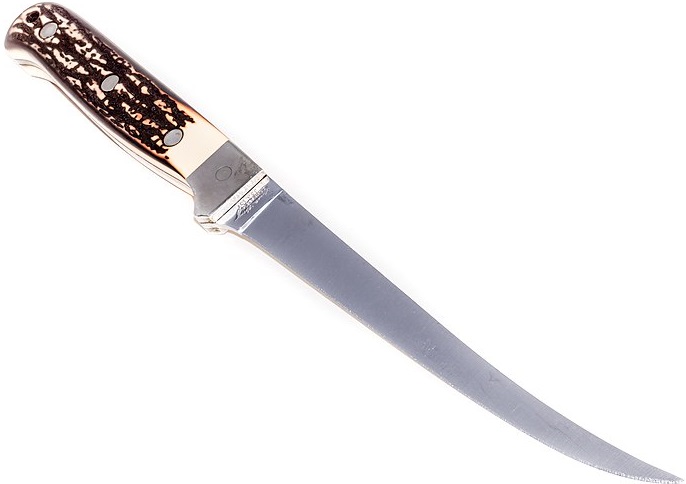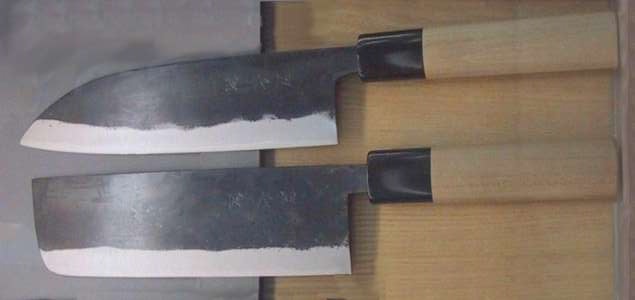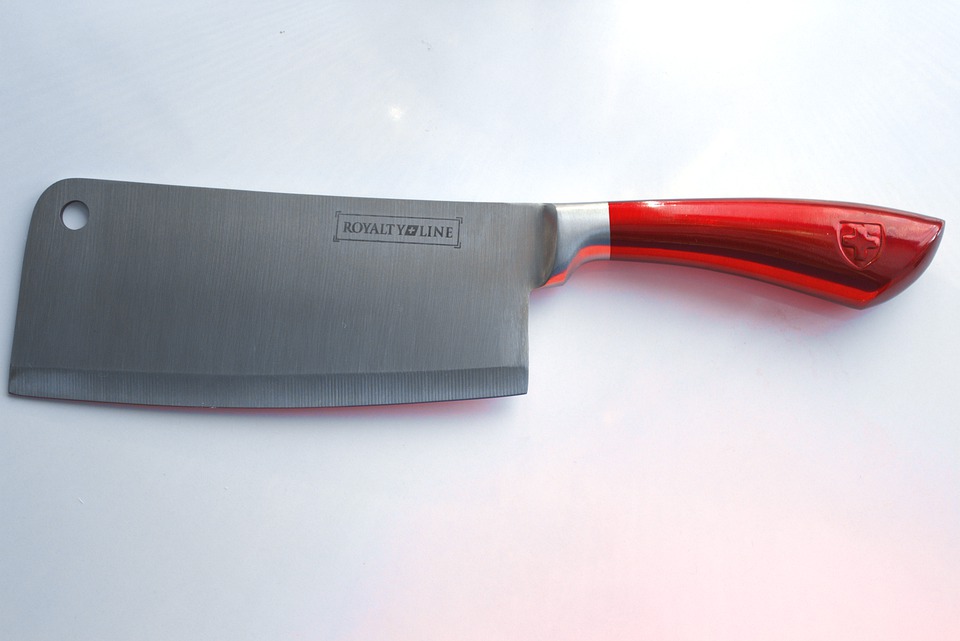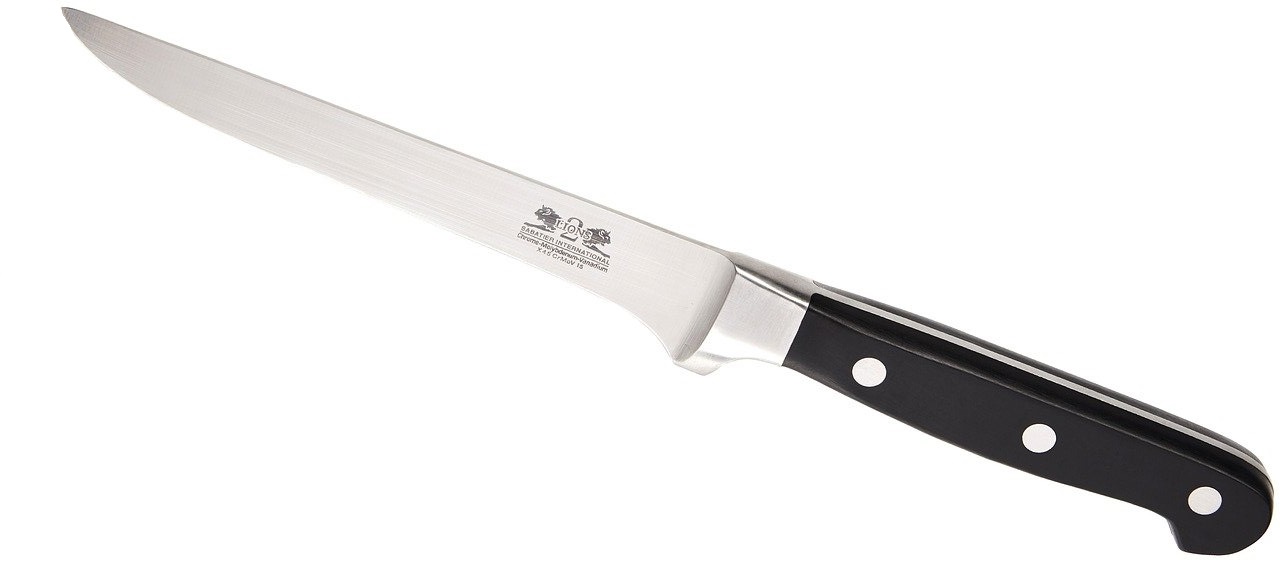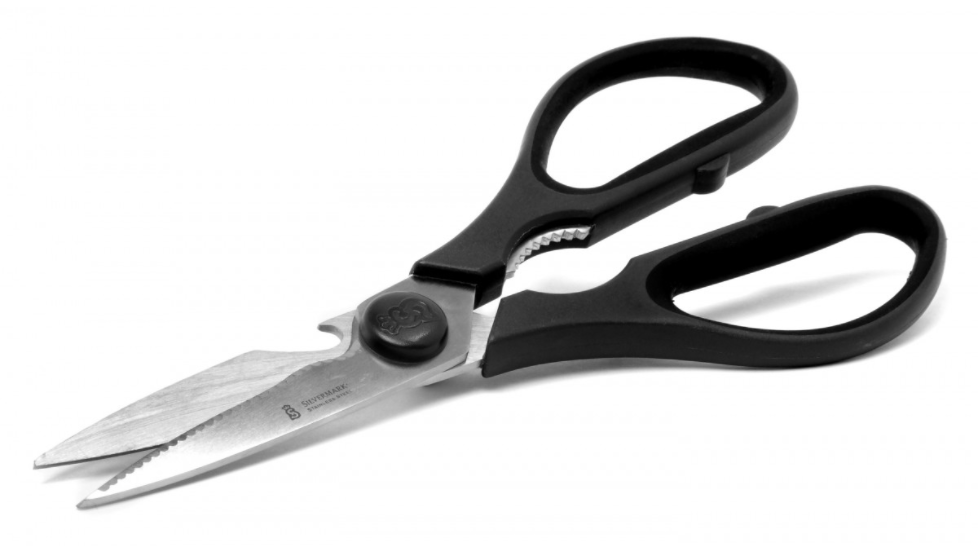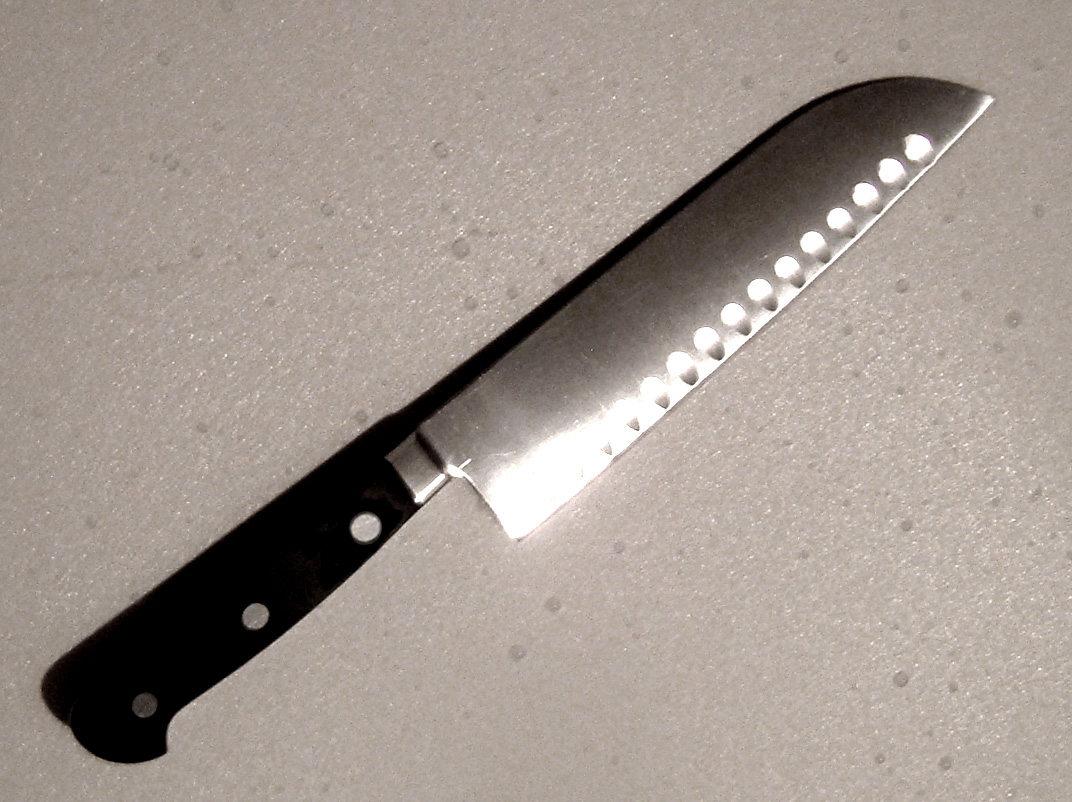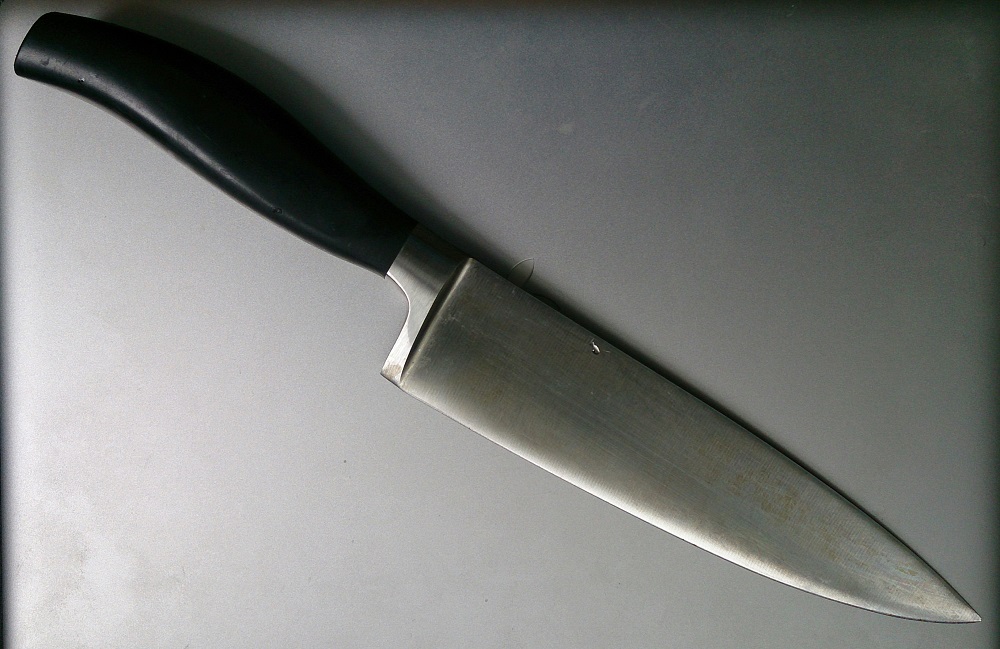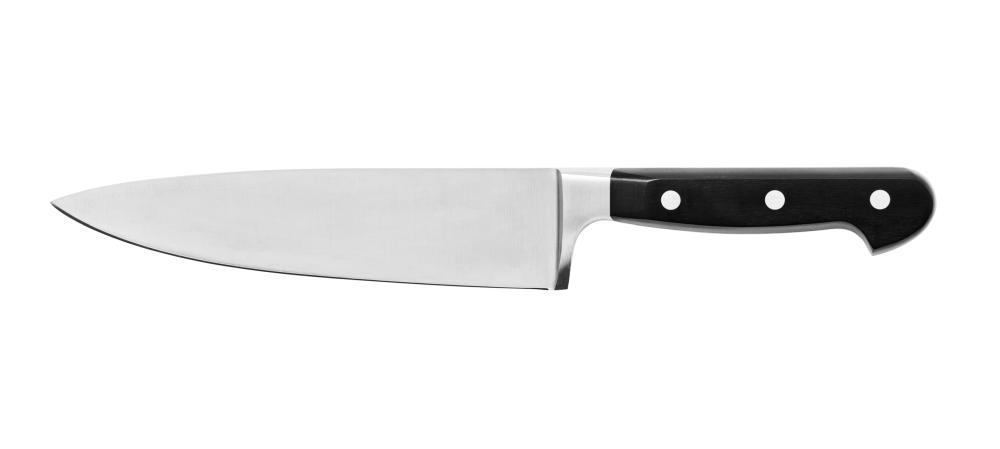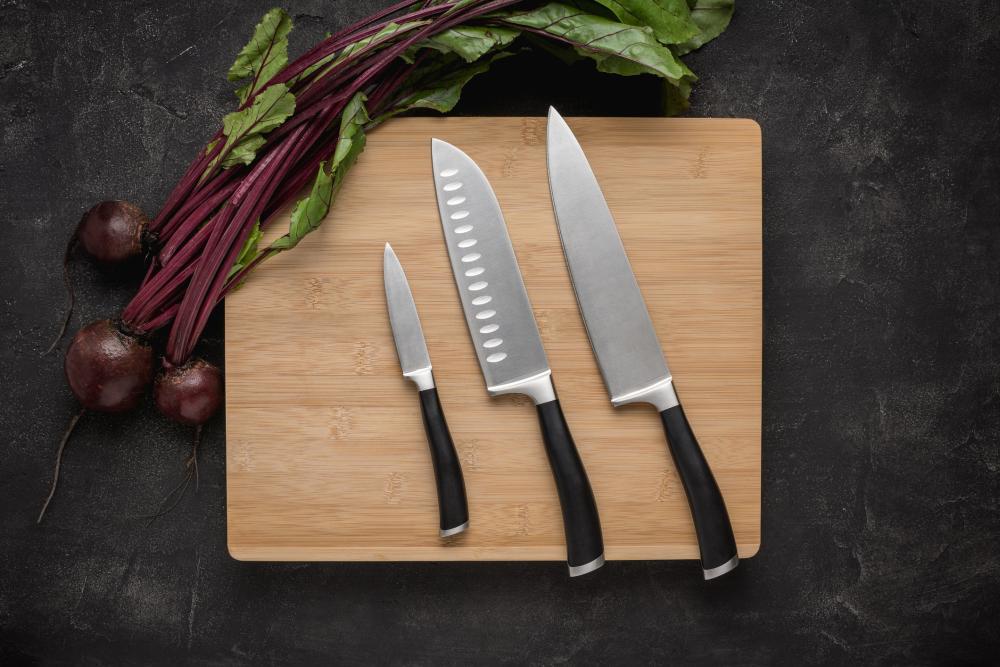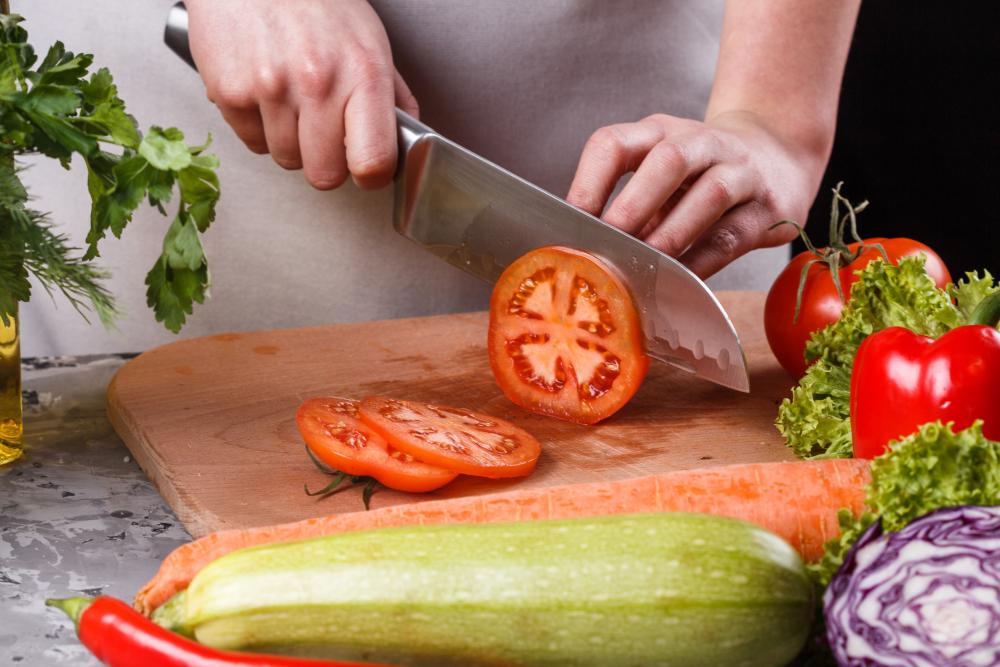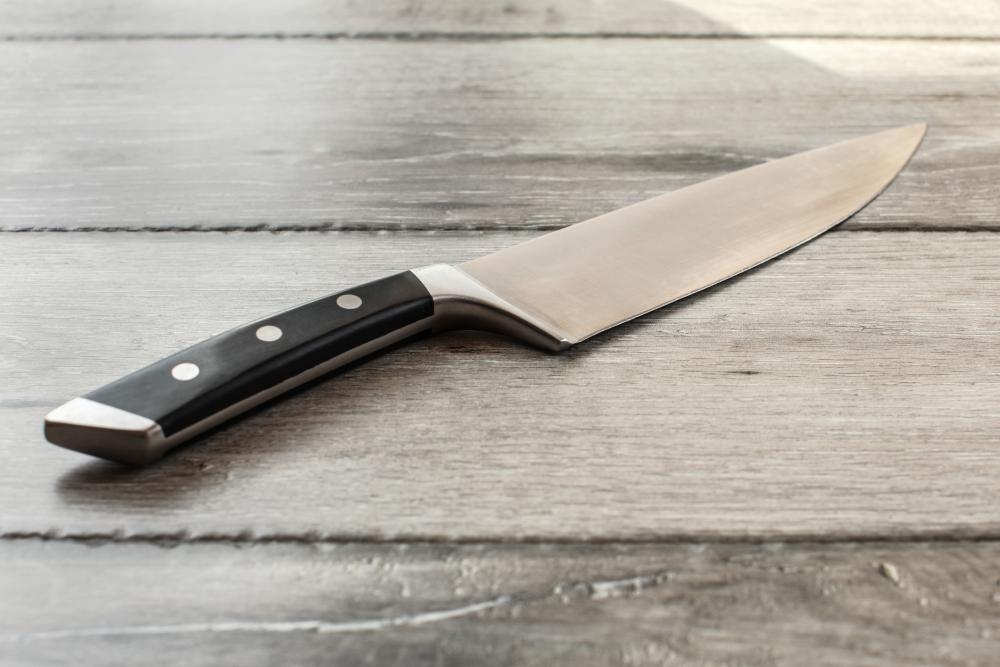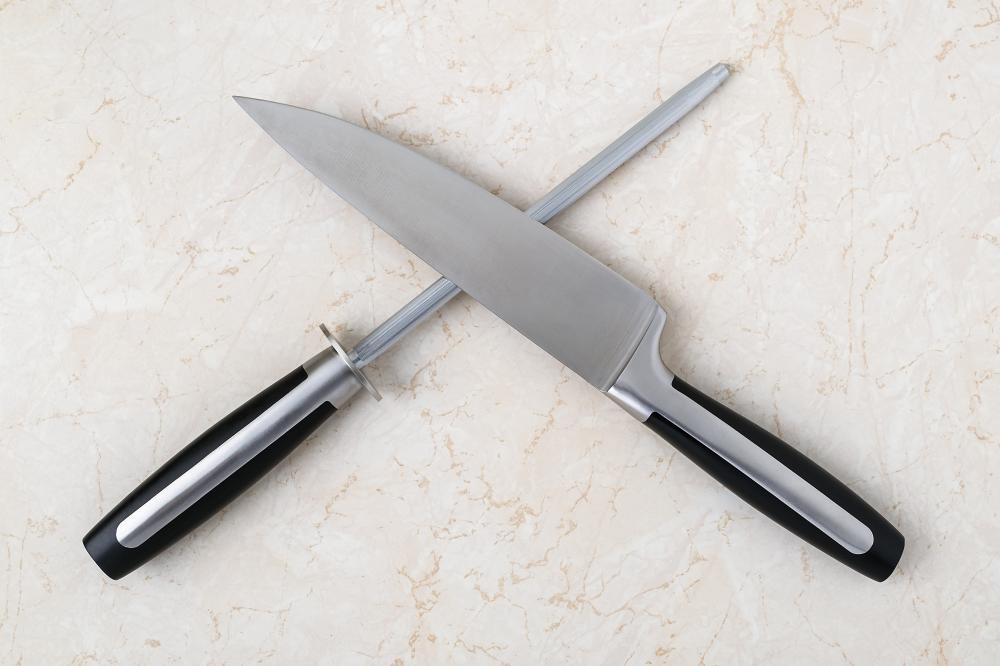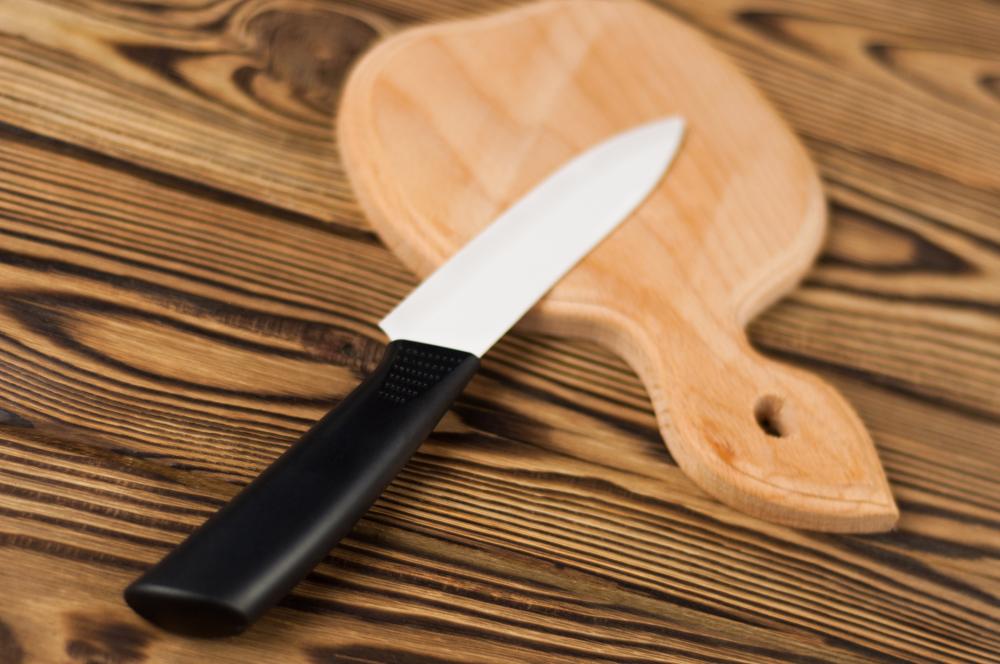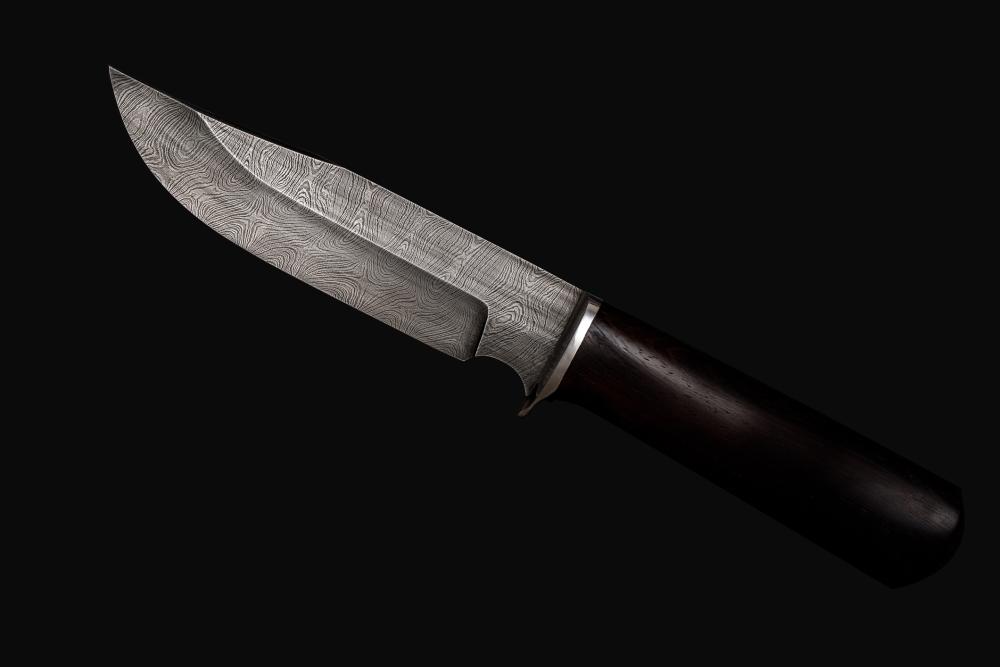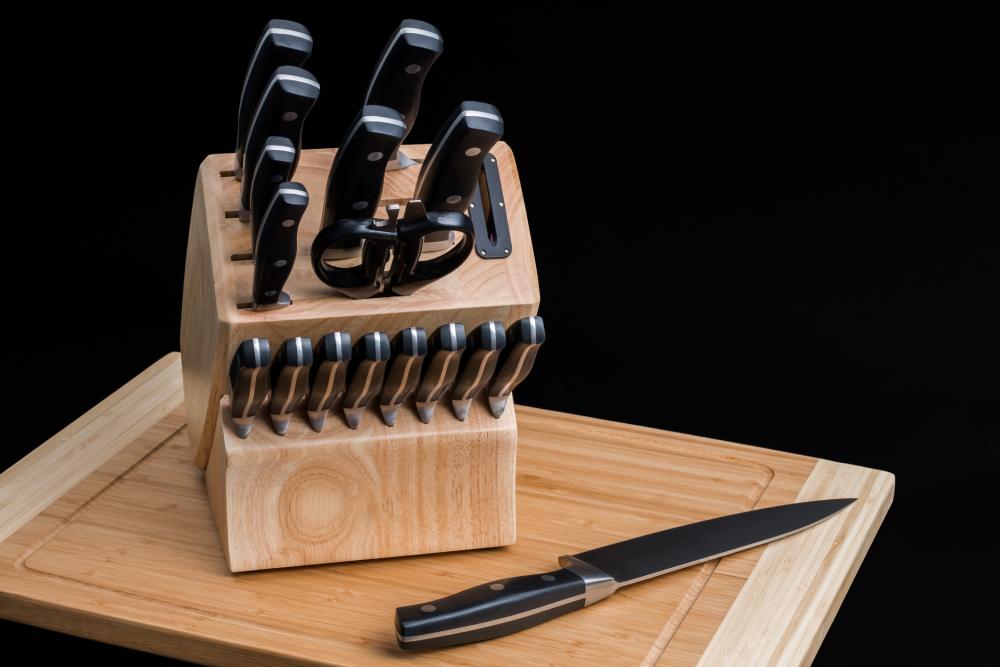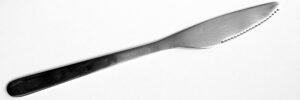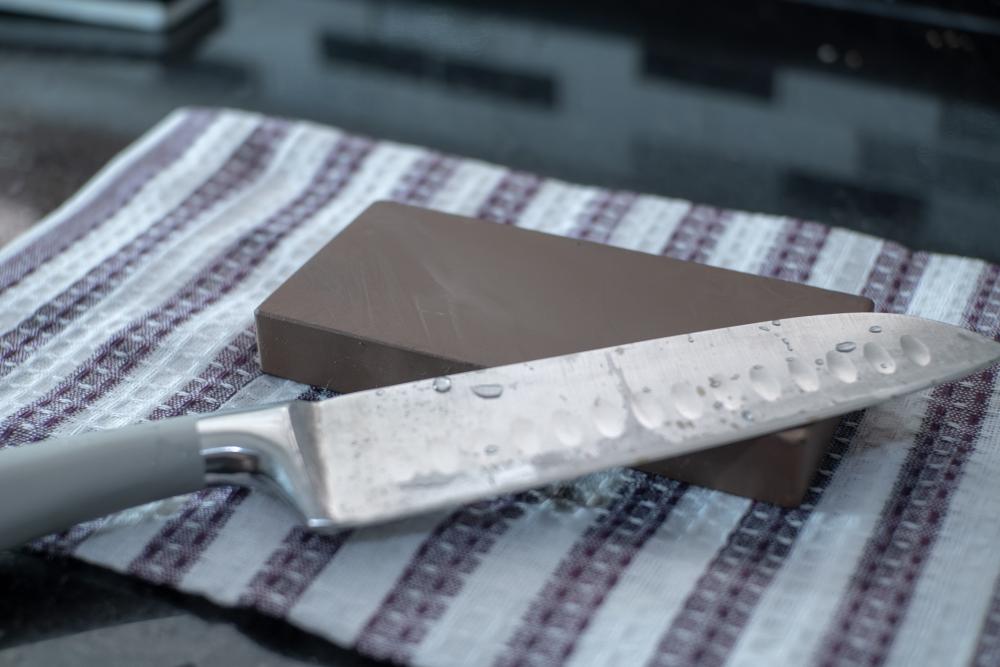Everything to Know About the Best Kitchen Knives You Need in 2023
If you’re new to a kitchen, chances are that you only have one knife in your drawer, maybe 2 if you use a separate serrated one to cut bread, but the fact of the matter is that there are many types of knives, and some of them are essential in your kitchen.
And even if you’re an experienced cook, there’s a very big chance that there are still some essential knives missing from your kitchen, and you may not be aware of how much easier they can help you get your job done.
That being said, different types of blades are made for different types of tasks, and the right knives can not only help you cut better, then can help you do it fast, and more efficiently.
That’s precisely the aim of today’s article, as we will be exploring the various types of knives that can be found in a modern-day kitchen, what they look like, what they are used for, and why you should stop using the same large kitchen knife to perform all of your slicing and dicing.
Table of Contents
What Makes a Kitchen Knife?
Before we go about and talk about the various kinds of knives that are available, we should first go through some Knife course 101 and learn exactly how a knife is built. By doing so, you can then better understand why there are so many types of knives, and why certain types are better suited for certain jobs.
Point – This is the very tip of the blade, and it can usually be sharpened so that you can use it for piercing or scoring food ingredients, or it can be squared off, which is something you’ll usually see in knives with much wider blades.
The blade – The blade needs no introduction since it’s the most important part of a knife, and its shape is what usually dictates its purpose. It can be made from a wide variety of materials, can be a full tang or a partial tang, have sharp or serrated edges, and more.
Unfortunately, the blade is also the part of the knife that usually dictates its lifespan, since a bent, chipped, or even a broken blade can mean that the entire life has reached the end of its lifetime.
Not only that, but since sharpening a knife’s blade basically means grinding into the blade bit by bit, a knife will also reach the end of its life once there’s not much blade left.
The edge – While the blade is the most iconic part of a knife, the blade is the one that does the actual cutting, since this is the only sharpened part of a knife. Just how sharpened the edge is dictated by how finely it is ground, and how long it will stay sharp until depends on what material the knife is made out of, and what you will be using it for.
We already mentioned that the edge of a knife can be serrated, or it can be straight.
The tip –Not to be confused with the point, the tip is merely the front part of a knife’s edge, right under the point. Basically think of the tip as that part of a knife that goes inside whenever you stab something, or when you’re doing delicate chopping or cutting.
The spine – If the edge is the sharpened lower part of the blade, then the spine is the blunt upper half, and the thickness of a spine is what dictates the overall strength of a blade.
In fact, unless you’re talking about knives that need to be as thin as possible on purpose, you should always look for the thickest knife possible when shopping for one that you’re expecting to last you a very long time.
The heel – The heel is the lowest part of a blade’s edge, right next to where the blade meets the handle. Because of the mechanics of how you use a knife, the heel of a knife is usually the widest part of a blade, especially in knives used for chopping up very hard foods, such as a meat cleaver.
The tang – While many users imagine that the blade is only the big shiny and sharp part of a knife, the fact of the matter is that it extends all the way through the handle as well, and the part that is inside the handle is called the tang.
This is a key component since it determines how well-balanced, heavy, stable and strong the knife really is, and the best types of knives that you can buy are the once called full-tang, which are the ones that have a tang that runs from the end of the blade all the way until the butt.
In fact, some knife manufacturers take that a step further and make the tang extra thick on purpose so that it alone can also serve as a handle.
The handle – Also known as the scales, the handle is the part of the knife that the chef grasps, and its design is just as important as the blade, as some knives have regular straight handles, while others have finger grooves to make them more ergonomic and easier to hold and maneuver.
There are no specific requirements as to what materials the handle can be made out of, but common materials include plastic, resin, wood, or, as mentioned earlier, some knife makers use a single big chunk of steel to make both the handle and the tang as a single piece.
The bolster – The bolster is right next to the heel, somewhere between the blade and the handle, and it usually acts as a finger guard, preventing them from slipping down and getting cut while you’re using the knife.
Not only that, but if the bolster is thick enough, it can add some extra weight, strength, and balance to the knife.
Handle fasteners – Handle fasteners are an optional feature since they are only used when a knife’s handle is made out of a tang and extra material that makes bringing it easier, as they are what hold everything together.
If a knife’s handle is made from a single piece that also includes the tang, the’s no use for handle fasteners.
The butt – The butt is the very end of the knife’s handle, and too serves a purpose in balancing out the entire knife. Besides, depending on the butt design and what it’s made out of, it can also be used for preparing food, suck as when you use it to crack hard materials.
Short Guide on Knife Edges
Knives are used to cut, chop, slice, and dice, so naturally the edge needs some extra careful attention, both when you’re looking to buy a new knife, as well as when you already have one and are looking to maintain it.
Of course, not all edges are the same, and different edge designs can help with different kitchen tasks:
Straight – Also called a flat ground edge, this is the most common type of edge, and it’s most commonly used for chopping, dicing, and fine cuts. Straight are found in chef’s knives, santoku knives, filleting knives, and more.
Serrated – Instead of relying on a single continuous straight blade and rocking motions to do the actual cutting, serrated edges use sharpened grooves and ridges, and they can be used to cut food that is either very tough (e.g. frozen meats, coconuts, etc), or very soft foods, especially if you’re not interested in crushing them while cutting (e.g. freshly baked bread).
Serrated knives can usually be found in bread knives, steak knives, and tomato knives.
Scalloped – Also known as Granton edge, scalloped edges have hollow dimples on either one or both sides of a blade, and while this may not directly affect the knife’s cutting efficiency, they do help by preventing sliced food from sticking to the blade.
They are particularly useful on knives used to cut wet or sticky food ingredients, such as meat, fish, fruits, or vegetables, such as salmon knives and santoku blades.
Hollow ground – Yet another feature that indirectly helps with a knife’s cutting efficiency, a hollow ground is when the blades start tapering down from the middle of the blade down to the edge, thus making it sharper and finer.
Unfortunately, the fact that the blade’s thickness is reduced as you go toward the edge also means that a hollow ground edge will make the blade less durable, easier to break, and will require sharpening more often. Nakiri knives can most often be seen with hollow ground edges.
Best Material to Make Knives Out Of
Now that you’ve learned how a knife is designed, you should also learn about the materials that can be used to construct a knife. You see, the material used for crafting your knife (especially the blade) has an enormous impact on its strength, durability, how long it will stay sharp, and it can even dictate what task the knife is best suited for.
Keep in mind that there is no such thing as a perfect material, as each has its own set of advantages and drawbacks, so when you do decide to go ahead and buy a new kitchen knife, consider this aspect because if you don’t pay attention, you’ll pay extra dollars.
Stainless Steel
Stainless steel is a hallmark of what it means to make knives, as it is the most widely used material in the world, not only for knives but for a lot of other kitchen utensils, primarily because stainless steel is easy to obtain, cheap, has enhanced durability, and offers excellent corrosion resistance.
What makes stainless steel so special is the fact that because of its chemical makeup (iron, carbon, and added chromium), it can easily repel stains, has a shiny finish, and makes the alloy strong and durable.
Unfortunately, what makes steel so desirable is also its greatest weakness. For starters, there’s no standard recipe for how to create stainless steel, so the exact nature of each alloy will vary between knife manufacturers.
That being said, if you are ever made to choose between two almost identical knives with 2 very different price tags, chances are the cheaper one is made from inferior stainless steel.
Carbon Steel
Somewhat similar to stainless steel, carbon steel is made using just carbon and iron, without any added chromium. Higher carbon content will usually make knives that are stronger, more rigid, and stay sharper for a longer time, making it an ideal choice for knives where brute force is more important than anything else, such as cleavers.
Unfortunately, the lack of chromium also means that carbon steel knives will stain and discolor more easily, especially if you tend to work with a lot of acidic foods.
That being said, choosing between a knife made out of stainless steel and one made out of carbon steel is merely you choosing between a knife that will look good and one that will be extra sharp and durable.
Ceramics
Despite the name, ceramic blades are not made out of clay using the same process as pottery and are instead made using hardened zirconium dioxide (ZrO2). Because they are non-metallic, they have absolutely no magnetic properties, and they are most often coated with other materials (especially the blade) for even more durability.
One advantage of ceramic blades is that they are very lightweight, and some may even argue that they are more hygienic than their metallic counterparts. Another advantage is that it’s easier to mold ceramics than it is to forge or print steel, so adding beautiful patterns, colors and other neat details is much easier, making them ideal for those that like to have them on display.
Unfortunately, ceramic blades do have one thing in common with pottery, and that is the fact that they are very fragile and brittle, and thus prone to cracks and even complete breakage in case of improper use. Because of that, you’ll never see cleaver knives with ceramic blades, but if you do, we recommend that you avoid them.
Another downside to ceramic blades is the fact that you need a specialized sharpening tool to maintain them since regular grinding stones just won’t cut it.
Damascus Steel
If you’ve ever seen an advertisement for a knife or a set of knives, chances are that you’ve heard about Damascus steel before, and it’s something that has been around since Medieval times, being used to make swords and knives alike.
The material is actually a mixture of 2 different metal alloys, usually one softer and more flexible and one harder and more rigid, and because the chemical composition of the 2 allows can be very different, it can result in a blade with a very iconic wavy pattern.
Damascus steel is very popular because the knives made out of it are very strong, durable, and stay sharp for a very long time, and a lot of users even like their trademark wavy pattern.
The only real downside of Damascus steel is that, since you can only make it using manual forging, it can be very expensive, with a single knife easily reaching several hundreds of dollars.
However, since there’s no real drawback as far as performance goes, many argue that owning even just one Damascus steel knife is well worth the investment.
Titanium
Titanium is probably the newest material on our list to be used in knife making, but we’re not surprised by it, since it is one of the hardest materials on the planet, after all.
Besides, titanium has no magnetic properties, is rust-resistant, and is incredibly lightweight, making them ideal for use in some of the most rugged climates around. More so, titanium blades are naturally of a much darker color, making them ideal for collectors and those that hold aesthetics in high regard.
Unfortunately, titanium blades tend to be less sharp, and they need frequent sharpening, and that’s the reason why most knives made out of titanium are pocket knives or diving knives and not kitchen knives.
Forged or Stamped Knives: Which Are Better?
You’ve learned about the parts of the knife and the materials that can be used to make them, so now it’s time to learn about the difference between a forged and a stamped knife.
Forged and stamped refer to the way the metal is processed to create the knife, and it can greatly affect a knife’s physical properties. Both forged and stamped knives have their own advantages and disadvantages, and we will be breaking them down in the section below:
Forged Knives
When you’re talking about a forged knife, you’re referring to a knife that was forged from a single piece of metal through hammering, pressing, honing, and manual sharpening. The forge master then adds a handle to the tang (unless the tang IS the handle), and then the blade receives a finishing shine and polish.
One advantage of forging steel is that it alters the alloys to a molecular level, greatly increasing its strength, and since both the blade and the tang are just one solid continuous piece of metal, you don’t have to worry about the knife’s durability either.
However, manual labor costs extra, so forged steel knives are a lot more expensive than their stamped counterparts. However, because forged steel knives are a lot more durable, a high initial investment will be well worth it since you won’t have to worry about replacing the knife for a good couple of years.
One way you can tell whether a knife has been forged or stamped is via the presence of a thick steel bolster between the blade and the handle since this tool is made from the same chunk of metal that made the blade and the tang.
Stamped Knives
The short version is that a stamped knife is the complete opposite of a forged knife from pretty much all points of view. They are made using a single piece of sheet metal which they then cut into the shape of a knife (think of a cardboard cutout) via a powerful stamping machine (hence the name).
The manufacturer then adds a handle to the tang portion of the knife, and then the blade is hardened, sharpened, and polished to add the finishing touches.
Because of how they are made, it’s easy to guess that stamped knives are a lot easier to mass-produce, and therefore cheaper. Besides, since the sheet metal they stamp the knife from is usually very thin, this also makes the knife very lightweight.
Unfortunately, this also means that the blade is a lot more fragile and that it has a harder time holding an edge, requiring very frequent sharpening.
While there are certain chemical and thermal processes that a manufacturer can treat the stamped metal with to make it more durable, it’ll still pale in comparison to a traditional forged knife.
Which Are the Different Types of Kitchen Knives?
The truth is that there are plenty of knives out there, although there are 12 designs that have become a staple in every modern-day kitchen.
However, if you’re just an occasional cook and are not interested in doing professional cuisine, you’ll only need a handful of them, since a part of them are great for multiple uses, while others are designed specifically for a certain task.
That’s why de decided to divide the list into 2 sections:
- Must-have Knives
- Optional Knives
Which Are the Knives That Any Kitchen Should Have?
Chef’s Knife
As you can probably tell by the name and from the very familiar design, the chef’s knife (a.k.a. the Cook’s Knife) is probably the most important knife in your kitchen, and for many of you, it’s also probably the only knife in your kitchen.
The blade of a chef’s knife is typically very broad, and because it tapers upward, it makes it easier to perform rocking motions, such as when you are moving the knife back and forth when fast mincing.
There’s no actual standard as to how long the blade should be, but typical chef’s knives have blades that can measure anywhere between 6 and 12 inches in length, and you’ll typically choose a knife based on the size of your hands.
As for how it’s constructed, chef’s knives can be both forged and stamped, although the best (and most expensive) are the forged ones.
Besides, since these are the knives that endure the most wear and tear inside a kitchen, they are usually constructed to have a full tang, meaning that the bottom part of the blade extends to the full length of the handle as well.
Not only does this make the knife more stable, but it also makes the knife more durable as opposed to partial tang knives that become wobbly over time and can even break if used too brutally.
The main reason why chef’s knives are viewed as must-haves is that because of their build, they can be used for pretty much any cutting task imaginable that can take place in the kitchen, from cutting meat to chopping vegetables.
Because of the knife’s importance, it’s also the main factor through which you’ll end up choosing your knife sharpener since if you don’t have one that can sharpen your chef’s knife, you can consider it pretty much useless.
Of course, knife sharpeners are ideally universal in nature, but if that’s not the case, at least make sure that you can at least use it to work on the material, grind, and edge angle of the chef’s knives
Santoku Knife
For those of you more interested in Asian cuisine, the santoku knife is the Japanese version of the chef’s knife. It’s a bit shorter and a bit thinner, making it ideal for cooks that like their utensils to be lighter and easier to handle.
Another difference between the Santoku knife and the chef’s knife is the fact that the blade is flat instead of tapered, so you can’t make any rocking motions with it. Because of this, it’s not so good for mincing herbs, but it’s better than a chef’s knife when chopping skinny vegetable slices.
One of the most recognizable features of a santoku knife is the blade’s design:
- It can sometimes have a hollow edge.
- It has dimples along the blade to prevent meat, fish, and other sticky food ingredients from sticking.
The name santoku means three primary virtues in Japanese, and it refers to the knife’s universal nature and the fact that it can easily handle slicing, dicing, and mincing.
Just like its Western counterpart, this is a well-rounded knife and can be used in pretty much any kitchen for pretty much any task imaginable.
Utility Knife
Both the chef’s knife and the santoku knife have been described as being must-haves, but the truth is that they may be too big for certain tasks, and that is where a utility knife can be very handy.
A utility knife can measure anywhere between 4 and 7 inches in length (handle included), and it’s mostly used to handle very small food items.
Unfortunately, because it is so small also makes it very lightweight, so it isn’t very good if you need to chop and slice larger items. O the other hand, the shorter and much narrower blade makes it good for thin slicing, trimming, and even filleting.
Kitchen Shears
Sure enough, kitchen shears aren’t actually knives, but they do serve a purpose and can cut certain things much better than any knife ever could.
Unlike regular tailoring scissors, kitchen shears have very thick blades made from very durable materials (usual steel). They can be very good when you need to snip herbs, chop up seafood, carve out a chicken, and even slice up a pizza.
There are even specialized kitchen shears specifically made for snipping herbs. They usually have multiple blades instead of just one, so that you can cut your herbs into lots of tiny pieces with a single snipping motion. The only drawback is that those blades are usually very weak, so don’t try using them for anything else.
As for kitchen shears in general, the only real reason why many users avoid them is that, because of their shape, they are a bit harder to sharpen than your garden-variety knife, and some may even need dedicated blade sharpeners.
Optional Knives (Must-Haves for Experts)
The next section of this article is dedicated to knives that serve specific purposes. Because there may be extended periods during which they may remain unused, we classified them as optional, since with a little bit of effort, you can use a chef’s knife, a santoku knife, or a utility knife to perform the same tasks.
Boning Knife
As you can probably tell from the name, a boning knife is used to separate the meat from the bones and can be used with all types of meat, including poultry, beef, or pork, and even finer operations, such as filleting fish.
These knives can be anywhere between 3 and 8 inches long, and while there is no standard regarding how thick the blade needs to be, one iconic feature is that the blade is curved backward.
With the proper skill, you can even use a smaller boning knife to peel and trim veggies, although it’s recommended that you try a dedicated knife for that task if you want the best results.
Another thing you might notice in boning knives is that the blades can have various levels of rigidity, ranging from very flexible to stiff. However, if you’re interested in precise cuts, go for boning knives with very stiff blades.
Bread Knife
Bread knives are yet another example of an iconic knife that may or may not be present in your everyday kitchen. It’s used to cut bread, cake, and in some cases even meat and seafood, and that’s all thanks to the iconic serrated design of the blade that’s made to look like a miniature saw.
However, unlike the other knives on our list, the bread knife doesn’t work by actually slicing the food, but by actually shredding it, and that’s how it can slice through fresh bread without you having to squish it down.
Cleaver Knife
Cleaver knives (sometimes known simply as cleavers) are the biggest, bulkiest, and heaviest of all kitchen knives. They are made to be full-tang, and the spine of the knife is extra thick compared to other knives because the blade needs to be tough enough to go through hard or thick materials, such as bone, meat, or hard vegetables and fruits.
Besides, because the blade is so wide, you can even use it to beat, pulverize and crush certain food items by simply using it sideways.
Paring Knife
This knife may look small and useless, but the fact of the matter is that it’s precisely its size that makes it good at what it does, and that is making garnishes for food and drinks by peeling fruits and vegetables or trimming the fat off of meat.
The blade measures between 3 and 4 inches, and it always comes with a pointed tip. Speaking of which, the shape of the blade’s tip is also how you can tell the various types of paring knives apart (bird’s beak, sheep’s foot, spear point, etc).
Steak Knife
Steak knives are a bit different from other knives mostly because you don’t use them to prepare food, but actually to eat the cooked food, and these are usually the type of knives that you would receive at a restaurant whenever you order steak, chicken, or fish.
Because they need to match a wider variety of food types, the blades of steak knives can be serrated, non-serrated, or semi-serrated, each of which come with their own pros and cons.
For example, it’s hard to sharpen a serrated knife, but then again you don’t have to do it all that often anyway. On the other hand, non-serrated blades dull faster but are easier to maintain.
Nakiri Bocho
If your favorite thing to do in the kitchen is to cut up vegetables into very tiny pieces, then you definitely need a Nakiri Bocho.
This knife is easy to recognize because the blade is very thin and very wide that features a squared-off tip, which is designed to maximize chopping.
The thin untapered blade allows you to easily cut very fine vegetable slices, while the blade’s extra width acts as additional weight that can help you drive the blade down through the more durable and fiber-rich ingredients.
Fillet Knife
When you first look at a filleting knife, you’ll most likely mistake it for a boning knife, but that’s understandable because both of them are very similar in terms of design, so much so that you can even use one to perform the tasks of the other. In fact, unless you’re a professional cook or a sushi fan, chances are you can’t tell the differences between the two at all.
However, there are several (albeit subtle) differences between the two. For starters, filleting knives have thinner blades that are also longer and more flexible since they only need to work on fish with much softer meat.
Of course, because the two knives are so similar, and since most people have a tendency to use them to perform the same tasks, many knife manufactures have started creating boning fillet knives, which combine the traits of the two into a single knife.
How Do I Keep My Knives Sharp?
No matter what design your knife has, what material it’s made of, or what forging process was used to create it, it will still dull at some point, the only variable being whether it will do it sooner or later.
Because of that, a good set of knives deserves a good sharpening tool, especially if you want to keep them sharp at all times.
Of course, how you store the knife can also affect its sharpness. For example, always place them gently wherever it is you store them, since randomly throwing them can chip the edge, and in more severe scenarios, cause cracks and breaks.
FAQ: Learn More About Kitchen Knives
How to choose a knife?
Choosing a brand new kitchen knife is completely up to personal preferences, although there are certain guidelines that you need to follow if you want to get the best deal available. First of all, ask yourself what kind of cooking habits do you have in order to determine what type of knife to buy.
Secondly, ask yourself what particular traits are you most interested in when looking for a new knife. These are most affected by the material the knife is made of (ceramics, stainless steel, etc), as well as the way they are constructed (forged, stamped, full-tang, or partial tang)
How often should knives be sharpened?
If you want a knife that will stay sharp as a razor at all times, or if you just want to prevent it from getting too dull, most experts recommend that you sharpen your knife once every 2-4 uses at home, and have a professional sharpening done to it at least once or twice per year.
Of course, the exact number of sharpening sessions vary based on what material the knife’s blade is made out of, what you use the knife for, the type of machine you use to sharpen the knife with. and even the way you store it when not using it.
What is a kitchen knife used for?
The typical kitchen knife, more precisely known as a chef’s knife, is often used to cut meat and fish, dice vegetables and fruits, chopping herbs and nuts, and more.
In fact, the traditional chef’s knife is the most versatile knife out there, and while there are a lot of variations out there that make them better suited for certain tasks, most of them retain the same core design traits.
What do you use a Santoku knife for?
Santoku knives are a Japanese version of the common chef’s knife, and it is ideal for pretty much any task where a knife can be useful(santoku is Japanese for three virtues, and it refers to the act of mincing, slicing, and dicing).
What should I look for when I choose a kitchen knife?
There are many criteria based on which you should choose a kitchen knife, and while there are many different types of knives out there, they all retain the same basic design, so as long as they have the following, they should do just fine;
- The handle needs to be comfortable, slip-resistant, and decent-sized (hand size varies)
- The knife needs to be well-balanced
- The blade should have a nice curve to it (does not apply if you’re looking for a knife that is naturally flat, like a Nakiri Bocho)
What 3 knives are essential to a chef?
With so many types of knives available, trying to determine which are essential can be pretty hard. However, if you were to choose just 3 knives that could cover all of your kitchen needs, they would be the following:
- A chef’s knife
- A serrated bread knife
- A paring knife
Why are ceramic knives better?
Ceramic knives have been around for some time now, and many cooks consider them to be better than carbon steel and stainless steel knives because of the ceramics’ innate resistance to acids and other caustic substances.
Besides, because of the crystalline structure or the ceramics’ molecules, they stay sharpened for a much longer period of time and are therefore ideal if you want to make fine cuts in meat, vegetables, fruits, and bread.
Do ceramic knives break easily?
The biggest drawback of ceramic knives is the fact that, due to their crystalline molecular structure, they chip and break much easier than metal knives, since the material lacks all kinds of elasticity.
Why is it called a Stanley knife?
If you have friends from the UK, Australia, New Zeeland, Holland, or Germany, chances are that you may have heard about the term Stanley knife.
This is because, in those respective countries, there is a manufacturer called Stanley Works that also makes knives, although their main focus is construction materials and tools.
Because of the company’s long history of making high-quality products, the name stuck and has become eponymous with the everyday knife.
What knives does Gordon Ramsey use?
Gordon Ramsey is a resounding name in any kitchen on Earth, and if you’re curious as to what type of knives one of the top chefs in the entire world uses, then they are the Wüsthof and Henckels branded knives.
Both companies have a long history of producing high-quality products, being one of the 2 best knife manufacturers in the world, with Wüsthof being around since 1814, and Henckels manufacturing knives since 1895.
Types of Kitchen Knives: Conclusion
We’ve reached the end of our article and we hope that you’ve learned everything you need to know about all of the various types of kitchen knives. Some of them are very similar to one another, while others are so specific in their design that they can only be used for a specific job.
Nonetheless, a set of good kitchen knives will make preparing food both at a restaurant or in your home a lot easier, safer, and more efficient, and it can even have an impact on how nice your dishes may end up being.
All in all, chances are that after you’ve read our little guide, you may have realized just how many types of knives are missing from your kitchen, and if that’s the case, let us know if you want us to write an article about the best kitchen knives that you can buy by leaving your feedback in the comments section below.
